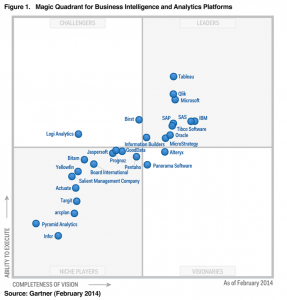Is ETL Development doomed?
There seems to be a couple of tracks for this. First is the pure development automation tools, such as Varigence MIST. If you are technically minded, take a look at this product demo video – though I suggest skipping to about 25 minutes in to see the real meat as it does go on a bit. It looks mindbogglingly powerful but is clearly shooting at the ETL pro who wants to churn stuff out faster, more consistently and with less fiddling about. MIST is limited to SSIS/AS (for now) and I’m not sure how far it will go as it’s clearly aimed at the developer pro market, which is not always the big buyers. I expect to be playing with it more over the next few weeks on a live project so should be able to get a better view.
The second path appears to be more targeted at eliminating ETL developers in their entirety. AnalytixDS wraps up metadata import (i.e. you suck in your source and target metadata from the systems or ERWIN), do the mapping of fields and apply rules, then “push button make code”. Obviously there’s a bit more to it than that, but the less you care about your back end and the quality of your ETL code (cough Wherescape cough) the more likely this product will appeal to you. Say hello, business users, who are the big buyers (though I look forward to troubleshooting your non-scalable disasters in the near future).
Do you have any opinion? Share with us by leaving your comments below of send us a message.








































